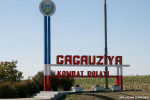
In the last general local elections of 2015, the number of persons put on the additional voter rolls was under 2% in most of the localities, due to the use of the State Register of Voters of the Central Election Commission (CEC). This is the main conclusion of a comparative analysis of the voter rolls for the general local elections of 2011 and 2015, released in the context of CEC preparations for the forthcoming presidential elections this year, IPN reports.
According to a press release of UNDP, the analysis was conducted with the support of UNDP Moldova within the Project “Improving the quality of democracy in Moldova through parliamentary and electoral support”, funded by the Governments of Sweden and Norway. The State Register of Voters is one of the modules included in the State Automated Information System – Elections (SAISE). The Register was developed in 2014, under the same UNDP project, with the aim of compiling correctly the voter lists and eliminating duplication in voters’ names.
”Now everything is being done in a centralized and systemic manner, and the human factor in the process of compilation of the lists of voters was reduced to the minimum. In the continuation of the effort to improve the lists, our new ambition is to implement the Register of Addresses which will help attribute citizens to their respective polling stations in all Moldovan localities,” said CEC chairman Iurie Ciocan.
Hence, according to the study, in 91% of the localities the number of persons included in supplementary voters’ lists is below 2%. Also, omission and duplication of data – which occurred frequently in the past – were close to total elimination. After the introduction of the State Register of Voters, in some localities the number of voters registered in supplementary lists dropped 10 times, as compared to 2011.
To date, all voters who have no voting restrictions are being automatically included in the lists of voters of their respective polling station according to their officially registered residence. The analysis showed that there were 56 localities with over 4% of voters registered in the supplementary lists in the 2011 general local elections, while in the 2015 general local elections the number of such localities dropped to 20. One of remaining problem in these 20 localities is the attribution of voters to specific polling stations on the basis of their official home residence.
“The development of the State Automated Information System – Elections is a continuous effort, which CEC and UNDP will keep advocating for to further enhance the transparency and inclusiveness of the electoral process in Moldova. It is also important to realize that the quality of voter registration and the quality of the compiled basic voter lists are depending not only on the design and continuous development of the system, but also on the quality and coordination of data gathered outside of the information system and the CEC responsibility,” said Narine Sahakyan, UNDP Moldova Deputy Resident Representative.
In 2016, with UNDP support, SAISE will be reengineered and enlarged with new modules.











